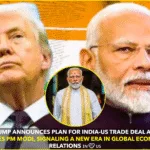Tehran | 23 June 2025 — In a dramatic escalation of the Middle-East crisis, Iran’s Majles (parliament) has overwhelmingly approved a resolution instructing the government and armed forces to “suspend all foreign commercial shipping through the Strait of Hormuz until U.S. forces withdraw from the Persian Gulf.” The vote, taken late Sunday after emergency debate, was framed as retaliation for last week’s U.S. air-strikes on three Iranian nuclear sites. While the motion still requires the blessing of the Supreme National Security Council and ultimately Ayatollah Ali Khamenei, it is the clearest legislative signal yet that Tehran is willing to weaponise the world’s most important energy chokepoint. theguardian.comaxios.com
A non-binding yet potent threat
Under Iran’s constitution, parliament cannot unilaterally close the strait; operational control rests with the Islamic Revolutionary Guard Corps’ (IRGC) naval branch and the Supreme Leader. Iranian state media nonetheless celebrated the ballot as “the voice of the nation,” and hard-line MPs warned that implementation could begin “within hours” if further U.S.–Israel “aggressions” occur. Analysts, however, note that previous Majles resolutions to block Hormuz (notably in 2012 and 2019) were never carried out, and many suspect the measure is meant first to raise diplomatic and market pressure. indianexpress.comaxios.com
Why Hormuz matters
The Strait of Hormuz is a 33-km wide bottleneck between Iran and Oman through which about 20 million barrels of crude and refined products move every day—nearly 20 % of global consumption and close to 30 % of all seaborne oil trade. It is also the route for roughly one-fifth of the world’s liquefied natural gas, mostly from Qatar and the UAE. The International Energy Agency (IEA) calculates that only 4.2 mb/d of pipeline capacity exists to bypass the strait, leaving the vast majority of Gulf exports with no alternative route. iea.blob.core.windows.neteia.gov
Markets already on edge
Oil traders reacted even before the parliamentary roll-call: Brent futures spiked to US $81.40 in after-hours dealing, up from Friday’s $77, while West Texas Intermediate touched $75.06. Energy consultancy Rystad says a confirmed closure could add US $3–5 per barrel overnight, and J.P. Morgan’s “stress-case” model puts Brent at US $130 if flows halt for a month. The Financial Times warns that a prolonged outage would “all but guarantee” a return of high-single-digit inflation in major economies. ft.comtheguardian.com
Can the world plug a 20 mb/d hole?
Even if Riyadh maximised its 5 mb/d East-West pipeline and Abu Dhabi filled the 1.5 mb/d Habshan-Fujairah line, only roughly a quarter of normal Hormuz traffic could be rerouted, according to the IEA factsheet. Physical shortages would therefore emerge within days unless consuming nations tapped emergency reserves. The U.S. Strategic Petroleum Reserve currently holds about 350 million barrels—enough to offset three weeks of lost Hormuz crude—but Asia, which takes 70 % of the strait’s flow, would feel the pinch fastest. iea.blob.core.windows.netindianexpress.com
Asia—and India—at the front line
China, India, Japan and South Korea together bought 69 % of Hormuz crude in 2024, U.S. Energy Information Administration data show. India, which imports 85 % of its oil, could see landed crude prices jump by ₹600–700 per barrel, warns New Delhi-based think-tank CEEW. Indian refiners have pipeline and shipping options via the Red Sea, but freight rates and insurance premia have already doubled since the U.S. strikes. Domestic pump prices—which the government has frozen since March—would need steep hikes or fresh subsidies, squeezing fiscal space ahead of the 2026 budget. indianexpress.comrediff.com
A global economic tipping point
The IEA’s June Oil Market Report pegs current world supply at 105 mb/d, leaving at best 3 – 4 mb/d of immediately usable spare capacity—almost all inside the Gulf and therefore itself trapped by any closure. That means even a partial disruption could trigger rationing, draw-downs of OECD emergency stocks and, according to ClearView Energy Partners, “stagflation-like conditions last seen in the late 1970s.” Conversely, many geopolitical analysts argue Tehran may ultimately stop short: a full blockade would sever its own sanctioned but still-lucrative exports to China, and could invite direct U.S. naval action. iea.orgaxios.com
Outlook
Whether the order ever becomes operational, Iran has succeeded in re-injecting a hefty geopolitical risk premium into oil markets at a moment when inflation-weary central banks were hoping for relief. The next signal investors will watch is the Supreme National Security Council’s meeting, reportedly set for later this week. Until then, every tanker transiting the narrow waterway—and every motorist at a filling station—remains hostage to Tehran’s strategic calculus.










